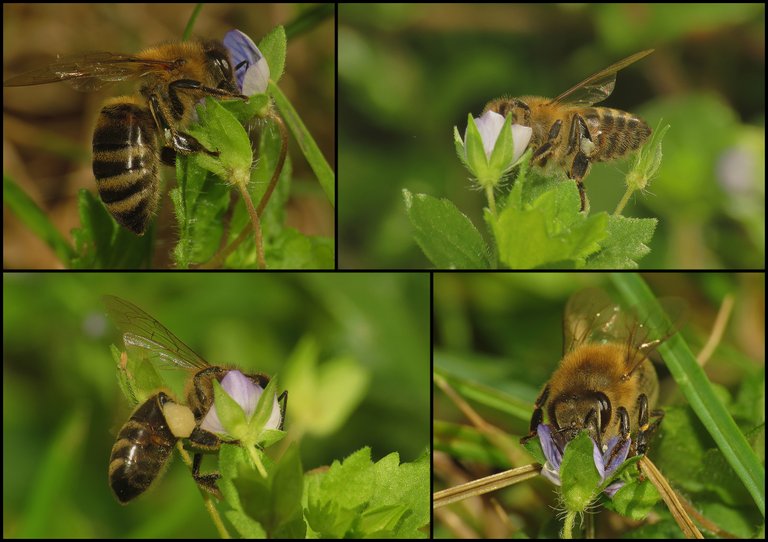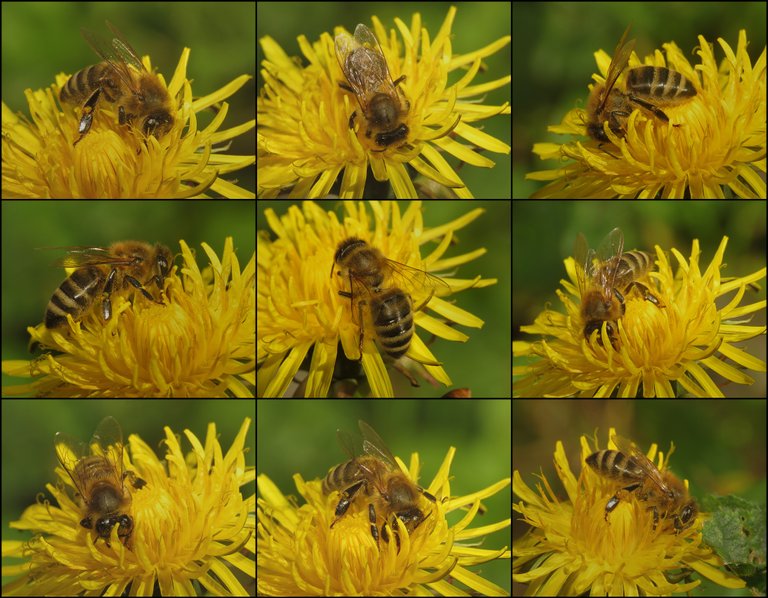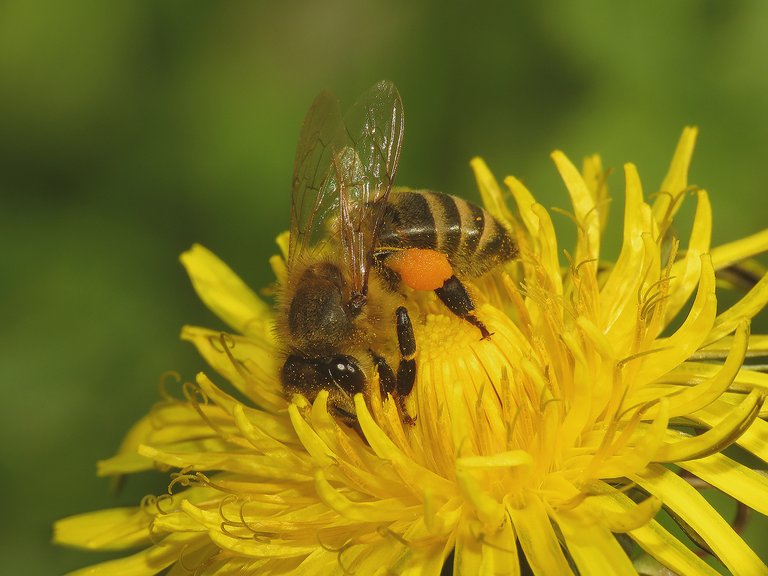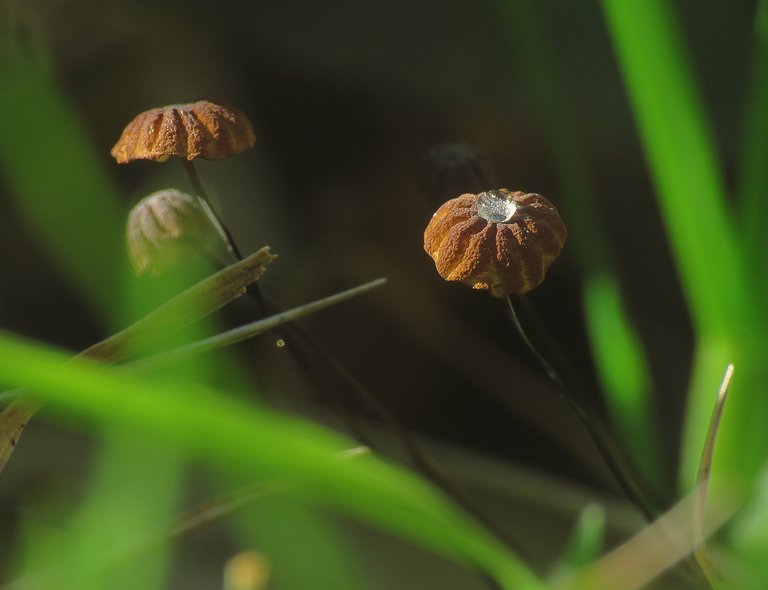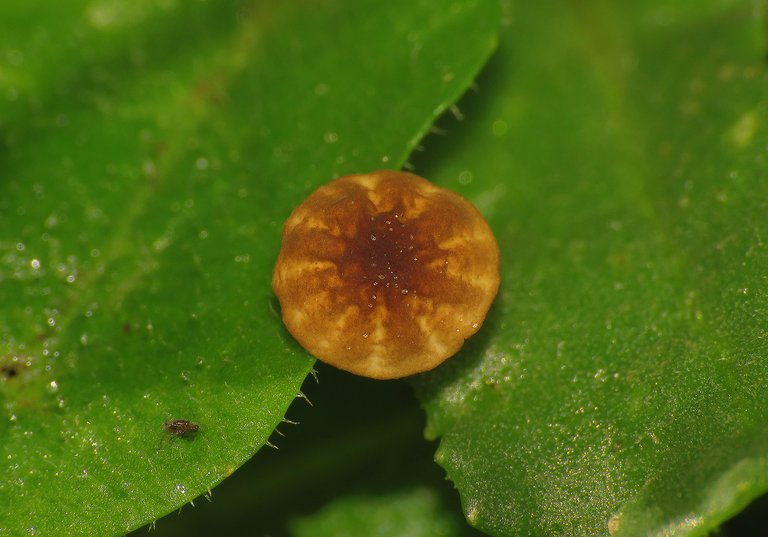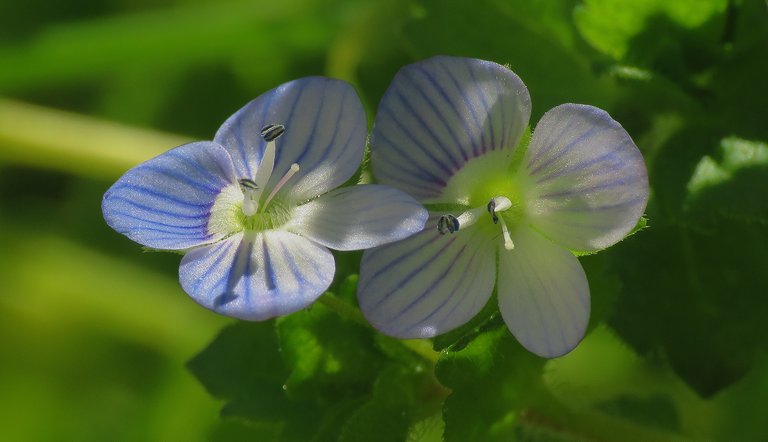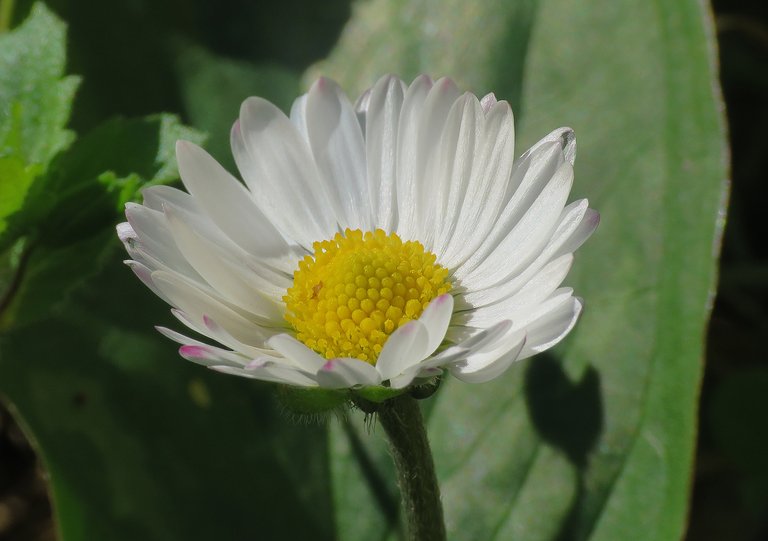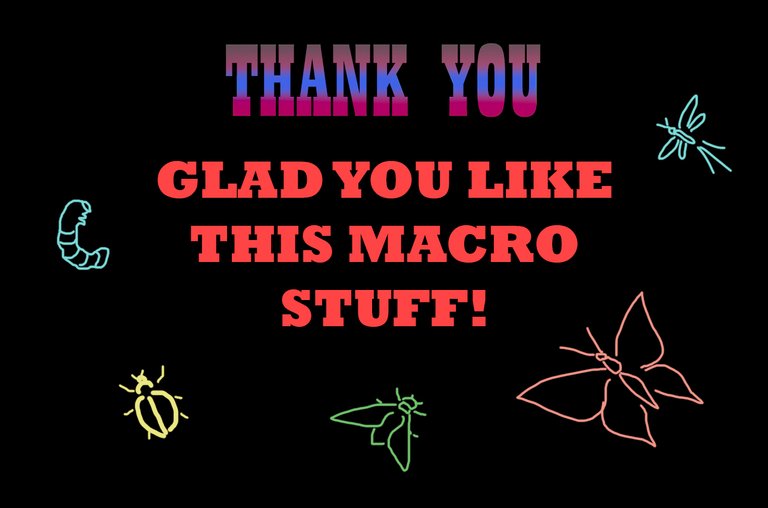I was cleaning dishes on the tenth day of January around noon and when I looked through the open kitchen window at some point, I was quite surprised to see a few bees buzzing around the small wildflowers on my lawn.
Some of those buzzers were real bees, others were bee-mimicking flies.
This opening picture shows a European honey bee (Apis mellifera) on the right and a syrphid fly Eristalis tenax on the left.
Both species are enjoying the nectar produced by the common dandelion flower (Taraxacum officinale).
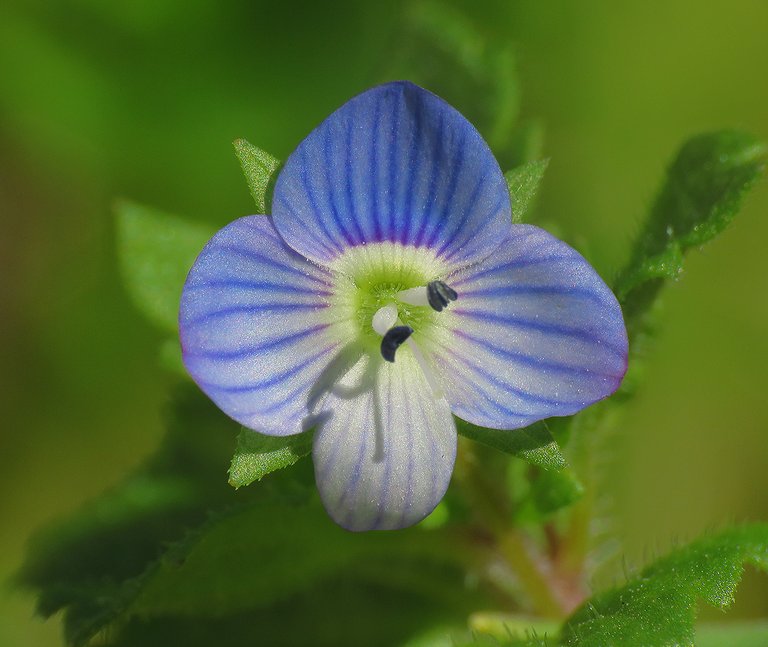
Bees and flies were visiting two types of flowers on that sunny winter day. The Taraxacum officinale mentioned earlier and the much smaller Veronica persica shown in this shot.
Here you can see the Veronica persica flowers photographed from different angles.
Honey bees are a bit heavy for these small flowers on fairly soft, gracile stalks so they look clumsy while collecting the nectar.

Here can you see yet another bee hanging on the flower.
In this set of four photographs, each bee is more or less on the top of the flower. That's becouse each shot was taken in a fragment of a second before the bee ended up hanging on the flower at the end of a bent stalk.
The flies are the same size, or even slightly bigger than the bees, but it seems that their body constitution is surprisingly lighter. The Eristalis tenax shown in this photograph is feeding on the small flower quite comfortably.
In the following shot ...
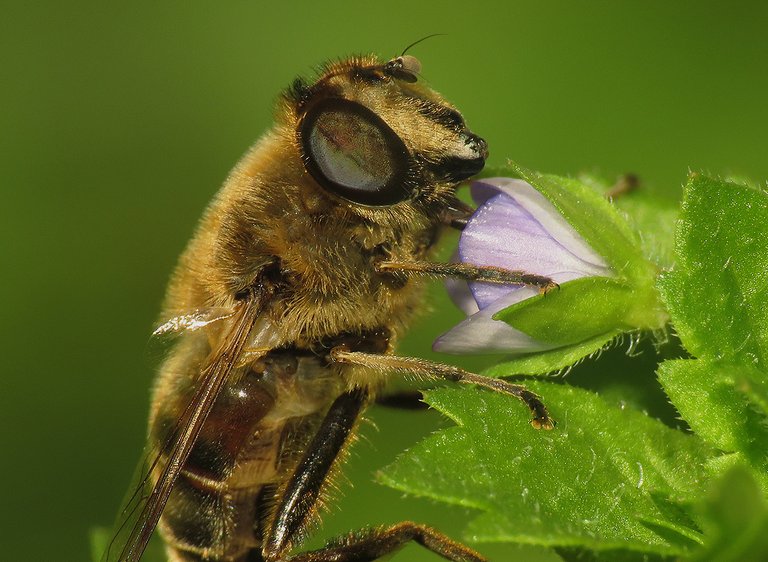
... I came closer to the fly.
Here you can see a bee on a dandelion flower.
Through this set of nine photographs, you can observe the same bee collecting the nectar by circling the center of the flower.
Here you can see a fly feeding on the same kind of flower in a similar way.
This bee has accumulated a nice amount of pollen on its hind legs.
Here you can see the same bee in various poses while circling the center of the flower.

Here you can see a bee on the Veronica persica flower. This one also has a pellet made of orange-colored pollen mixed with a bit of nectar.
In the following photograph ...
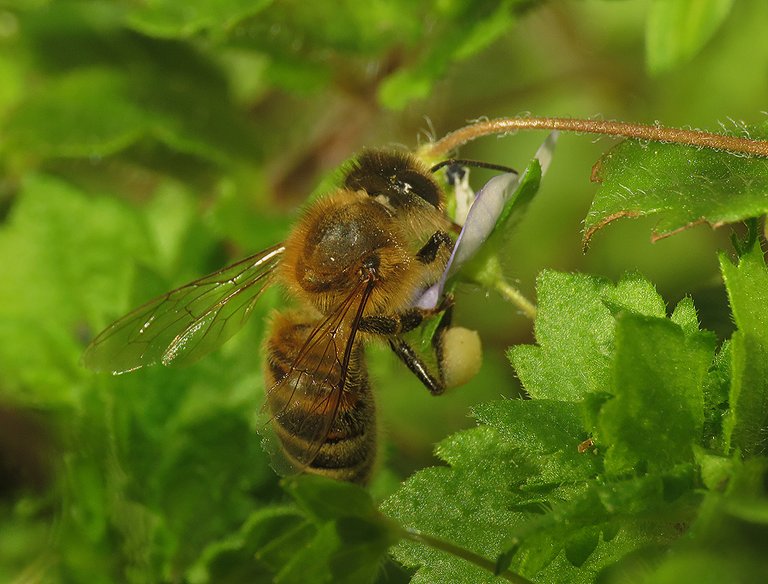
... you can see a bee carrying a white pellet on its legs.
I also find a few tiny mushrooms there on the lawn while observing the flies and the bees buzzing around the flowers.
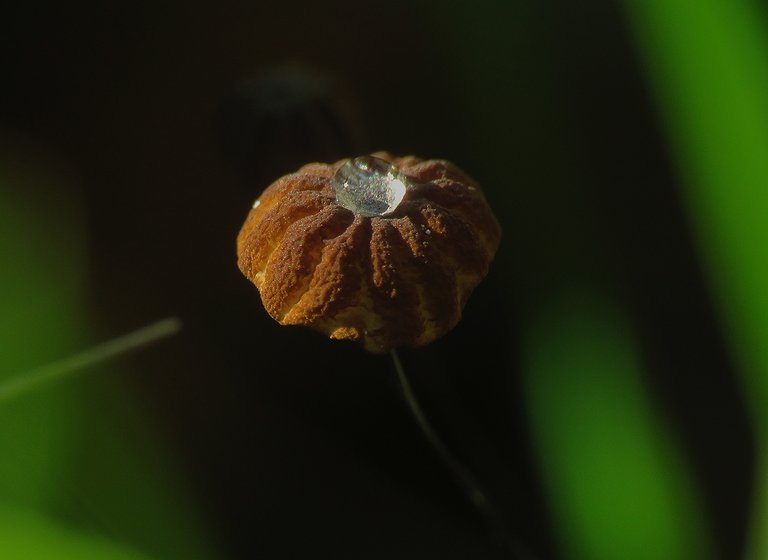
One of those slightly dry and shriveled mushrooms ...
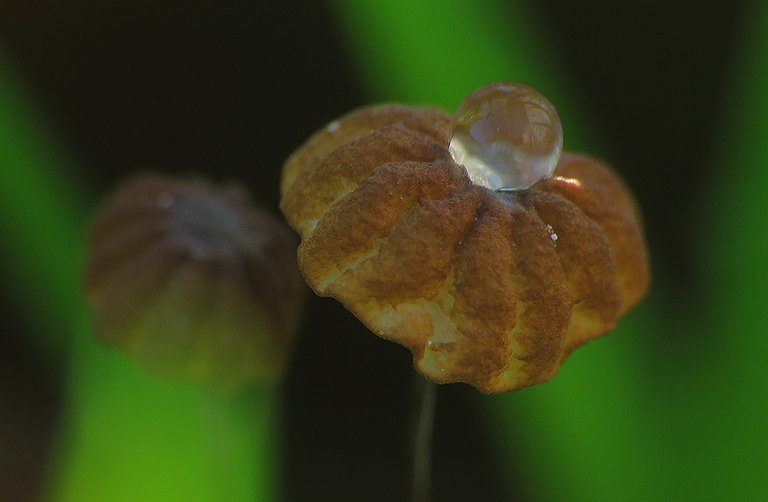
... had a dew drop on the top of its cap.
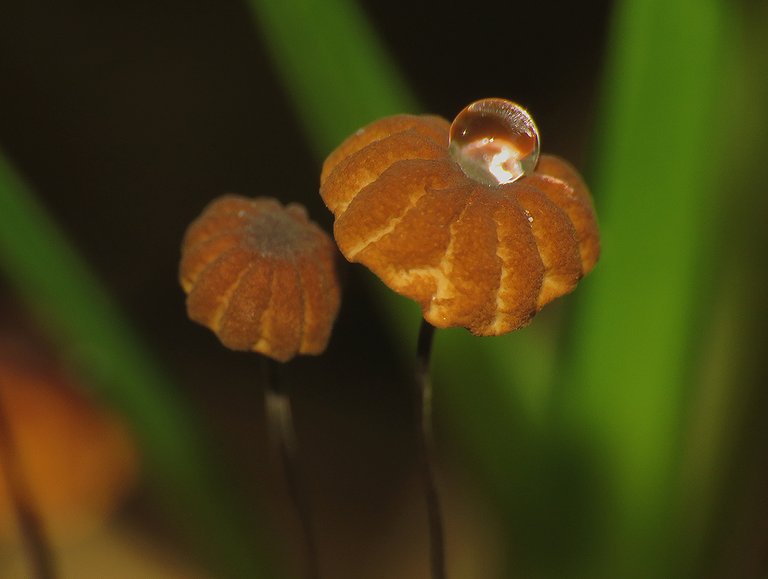
Marasmius siccus is the scientific name of this fungus from the Marasmiaceae family.
Here you can see a Marasmius siccus that hasn't shriveled yet.
In the following photograph ...
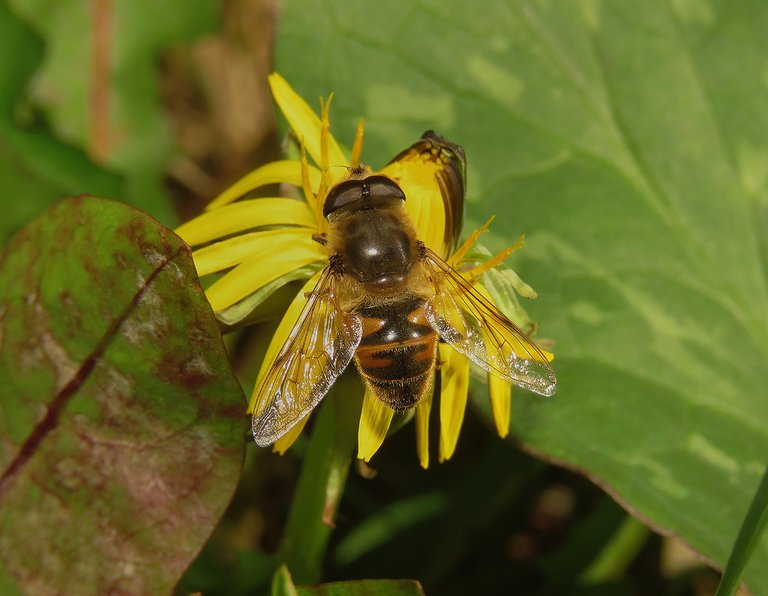
... yet another Eristalis tenax fly is posing on yet another dandelion flower.
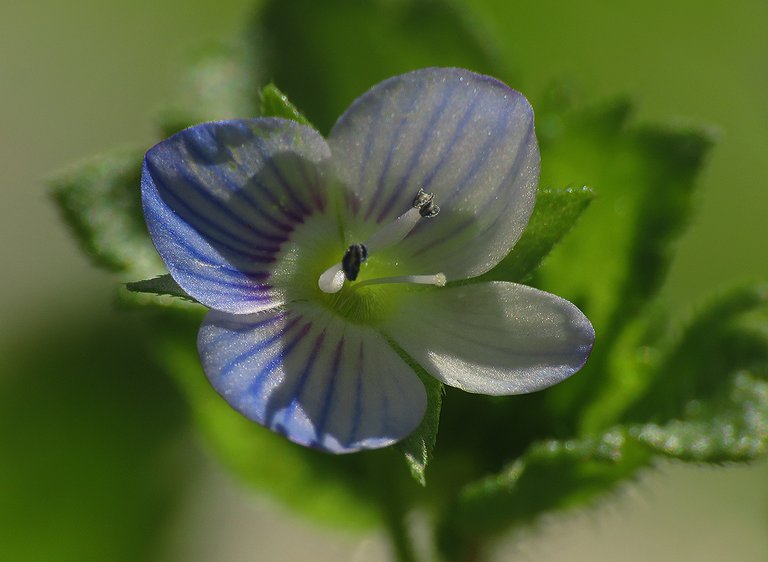
Here you can see a portrait of yet another Veronica persica flower.
In the following shot ...
... two flowers of the same kind are posing together.
Through this set of six photographs, you can watch another Eristalis tenax circling the center of the dandelion flower while feeding on nectar.
Among many Veronica persica and Taraxacum officinale, I found only one Bellis sylvestris flower. This plant is commonly known as the southern daisy.
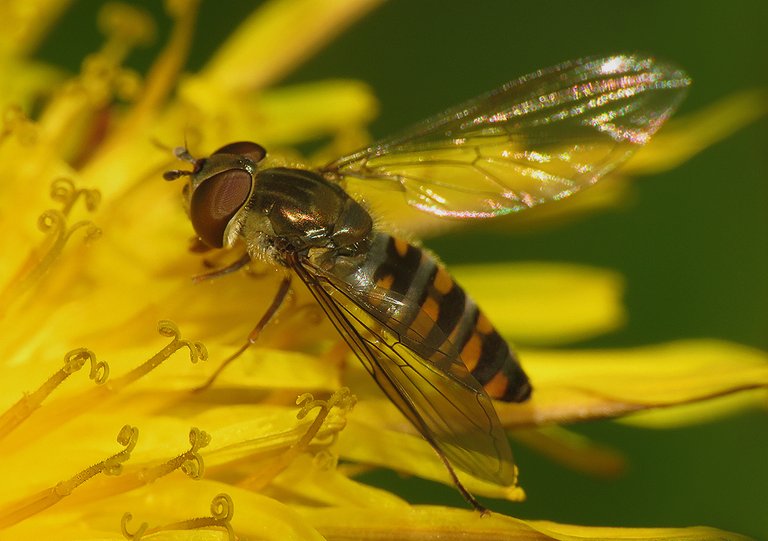
On another dandelion, I found a different kind of syrphid fly. The name of this species is Episyrphus balteatus.
Here you can see yet another Eristalis tenax.
This is yet another Apis mellifera.
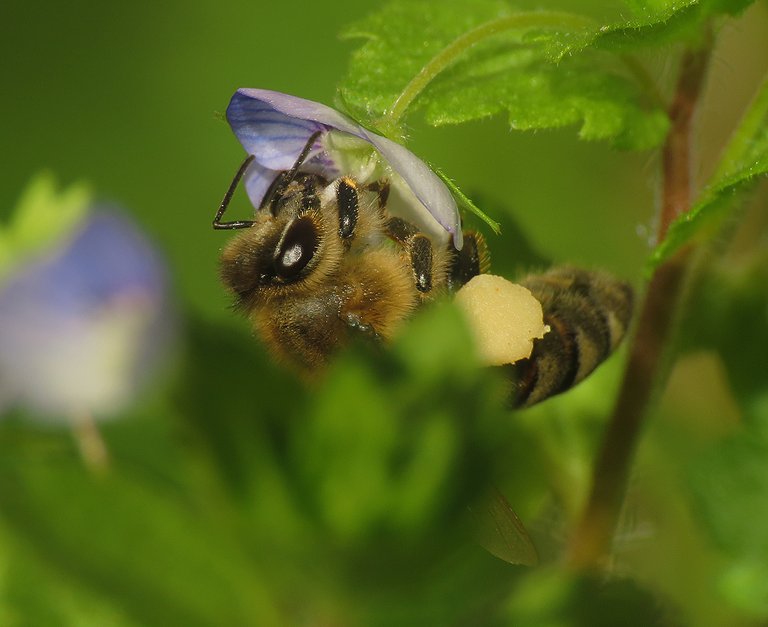
In this last shot, a bee is seen hanging on the flower through a bit of blurred vegetation in the foreground.
AND THAT'S IT. AS ALWAYS HERE ON HIVE, THE PHOTOGRAPHS ARE MY WORK.
The following links will take you to the sites with more information about the protagonists of today's post. I found some stuff about them there.
https://en.wikipedia.org/wiki/Eristalis_tenax
https://en.wikipedia.org/wiki/Western_honey_bee
https://en.wikipedia.org/wiki/Taraxacum_officinale
https://en.wikipedia.org/wiki/Marasmius_siccus
https://en.wikipedia.org/wiki/Bellis_sylvestris
https://en.wikipedia.org/wiki/Episyrphus_balteatus



